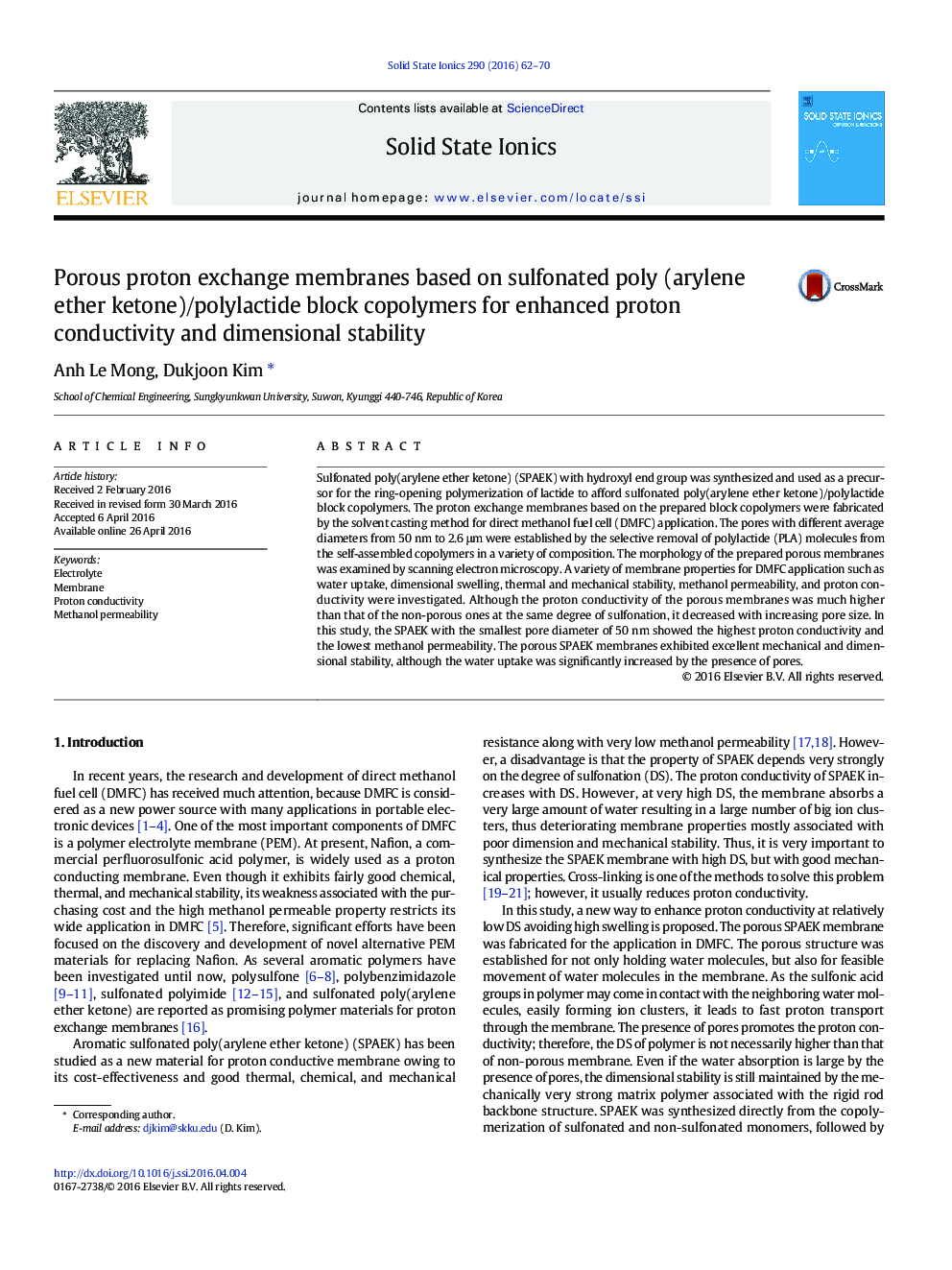| Article ID | Journal | Published Year | Pages | File Type |
|---|---|---|---|---|
| 1296106 | Solid State Ionics | 2016 | 9 Pages |
•Porous proton exchange membranes were prepared based on SPAEK/PLA di-block copolymers.•Proton conductivity of the porous SPAEK membranes was much higher than that of non-porous ones.•SPAEK with the smallest pore diameter of ~ 50 nm showed the highest conductivity, but it decreased with increasing pore size.•Porous SPAEK membranes exhibited excellent mechanical and dimensional stability even at high water uptake.
Sulfonated poly(arylene ether ketone) (SPAEK) with hydroxyl end group was synthesized and used as a precursor for the ring-opening polymerization of lactide to afford sulfonated poly(arylene ether ketone)/polylactide block copolymers. The proton exchange membranes based on the prepared block copolymers were fabricated by the solvent casting method for direct methanol fuel cell (DMFC) application. The pores with different average diameters from 50 nm to 2.6 μm were established by the selective removal of polylactide (PLA) molecules from the self-assembled copolymers in a variety of composition. The morphology of the prepared porous membranes was examined by scanning electron microscopy. A variety of membrane properties for DMFC application such as water uptake, dimensional swelling, thermal and mechanical stability, methanol permeability, and proton conductivity were investigated. Although the proton conductivity of the porous membranes was much higher than that of the non-porous ones at the same degree of sulfonation, it decreased with increasing pore size. In this study, the SPAEK with the smallest pore diameter of 50 nm showed the highest proton conductivity and the lowest methanol permeability. The porous SPAEK membranes exhibited excellent mechanical and dimensional stability, although the water uptake was significantly increased by the presence of pores.
